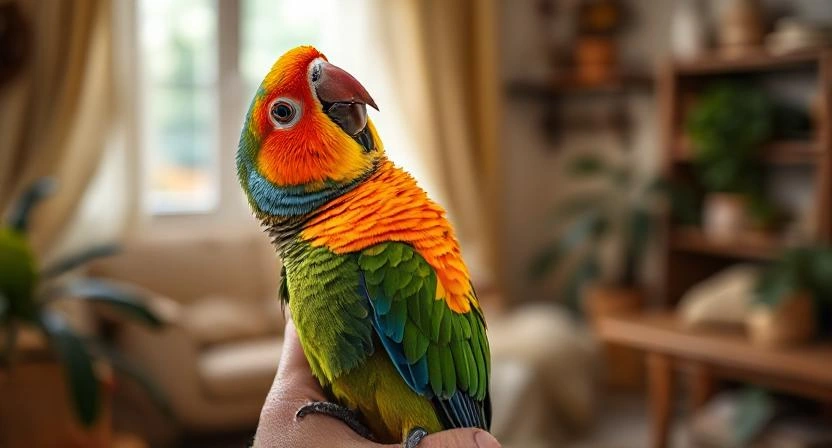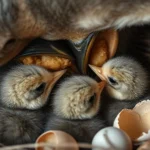The Art of Bird Communication
If you’ve ever stared at your bird chirping away and wondered, “What are you trying to tell me?”—you’re not alone. Bird communication is fascinating, subtle, and incredibly expressive. Whether it’s a soft chirp, a puffed-up chest, or a dramatic wing stretch, every movement and sound has meaning. Understanding your bird’s unique language isn’t just fun—it’s vital to creating a stronger bond.
In this guide, we’ll explore how to talk to your bird in ways that make sense to them, interpret their body language, and even how to help them understand you. Let’s unlock a world of feathers, flutters, and friendly chatter!

Large 63" Wrought Iron Rolling Bird Cage
This spacious 63-inch wrought iron bird cage by Yaheetech features a rolling stand and is ideal for African Greys, Quakers, Amazons, Canaries, and other small to medium-sized birds.
Why Bird Communication Matters?
Just like humans, birds communicate to express emotions, needs, and social cues. Some signs may indicate happiness, while others could point to discomfort or fear. Misunderstanding these signals can lead to frustration for both the bird and the owner. Learning bird communication helps create a more peaceful and enriching home.
Understanding Bird Body Language
Birds might not have facial expressions like us, but their body language speaks volumes. Here’s how to decode some common cues:
1. Feather Fluffing
Meaning: Relaxation or preparing for sleep. But if it’s persistent, it may signal illness.
2. Tail Bobbing
Meaning: Slight bobbing after activity is normal. Excessive bobbing might indicate respiratory issues.
3. Pupil Dilation
Meaning: Rapid pupil changes, known as “pinning,” often reflect excitement, aggression, or curiosity.
4. Beak Grinding
Meaning: A sign of comfort, especially before sleep.
5. Wing Stretching
Meaning: Like us stretching after a nap! Birds often stretch both wings and legs.
Vocal Cues in Bird Communication
Birds vocalize differently based on their species and personality. Here are some common sounds and their meanings:
- Chirping: Contentment or social engagement.
- Screeching: Stress, fear, or a need for attention.
- Clicking or Beak Popping: May signal aggression or territorial behavior.
- Whistling or Mimicking: Birds mimicking sounds are often happy and well-socialized.
👉 Want to encourage positive vocalization? Offer a bird-safe toy or a bird communication product that rewards good behavior — check it out here.

ZuPreem FruitBlend: Nutritious Parrot & Conure Pellets
ZuPreem FruitBlend bird food provides essential nutrition with natural fruit for Parrots, Conures, Caiques, African Greys, Eclectus, and Small Cockatoos. (M/L, 3.5 lb)
How to Talk to Your Bird?
Here’s how you can engage in two-way bird communication:
- Be Consistent: Use the same words or sounds during regular routines. For example, say “Goodnight” before covering the cage.
- Use a Calm Tone: Birds are sensitive to tone. Avoid yelling—even when correcting behavior.
- Repeat and Reward: Repetition builds understanding. Use positive reinforcement like treats or soft praise.
- Watch and Respond:If your bird tilts its head or mimics a sound, respond! These back-and-forths strengthen trust.
Enrichment Tools to Enhance Bird Communication
Interactive tools like mirrors, foraging toys, and sound-recording buttons help birds express themselves. Some bird owners use speech training buttons (like those for dogs) to let birds “talk” back.
Check out this exclusive deal on bird communication tools:👉 bird communication product
Frequently Asked Questions (FAQs)
Can birds understand human language?
While birds don’t “understand” in the human sense, they can associate words with actions or objects through repetition.
What if my bird only screams?
Excessive screaming may signal boredom, stress, or a need for interaction. Try changing the environment or providing toys.
Is my bird happy if it talks a lot?
Not always. Vocalization can mean different things, but generally, a talkative bird is a healthy, engaged bird.
How do I teach my bird new sounds?
Repetition and timing are key. Associate sounds with actions or treats for best results.

Living World Millet Spray: Premium Treat for Pet Birds
Spoil your Budgies, Canaries, Finches, Cockatiels, and other pet birds with Living World Millet Spray. A delicious and enjoyable premium treat. (17.6 Oz)
Final Thoughts & Next Steps
Breeding pet birds is a joyful journey, but it requires patience, knowledge, and the right setup. By following these bird breeding tips, you’ll give your feathered friends the best chance at raising healthy, happy chicks.
🚀 Ready to start? Here’s your next step:
👉 Get Your Premium Nesting Box Here – Give your birds the perfect home for breeding success!
Have questions? Drop them in the comments below—we’d love to help!
Happy bird parenting! 🐣💛



